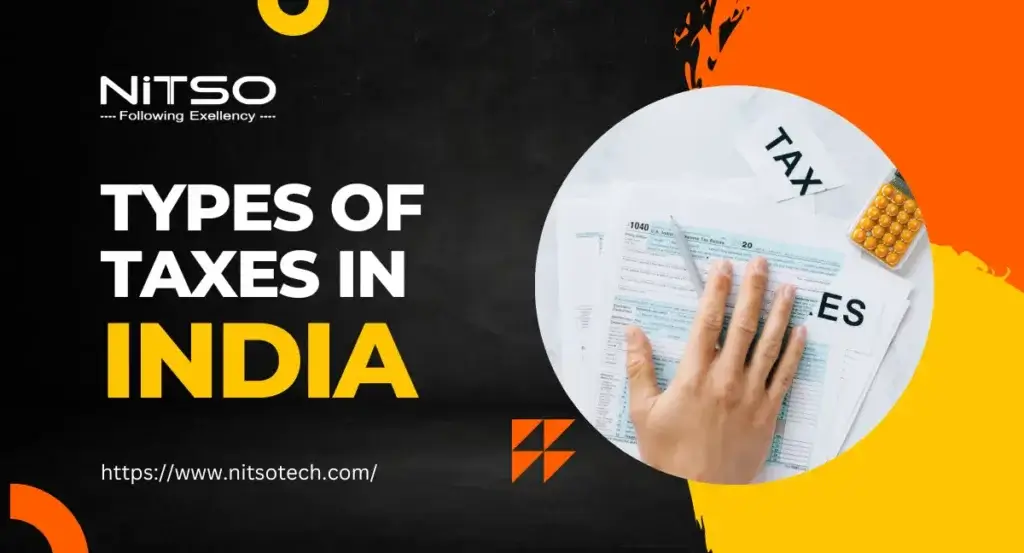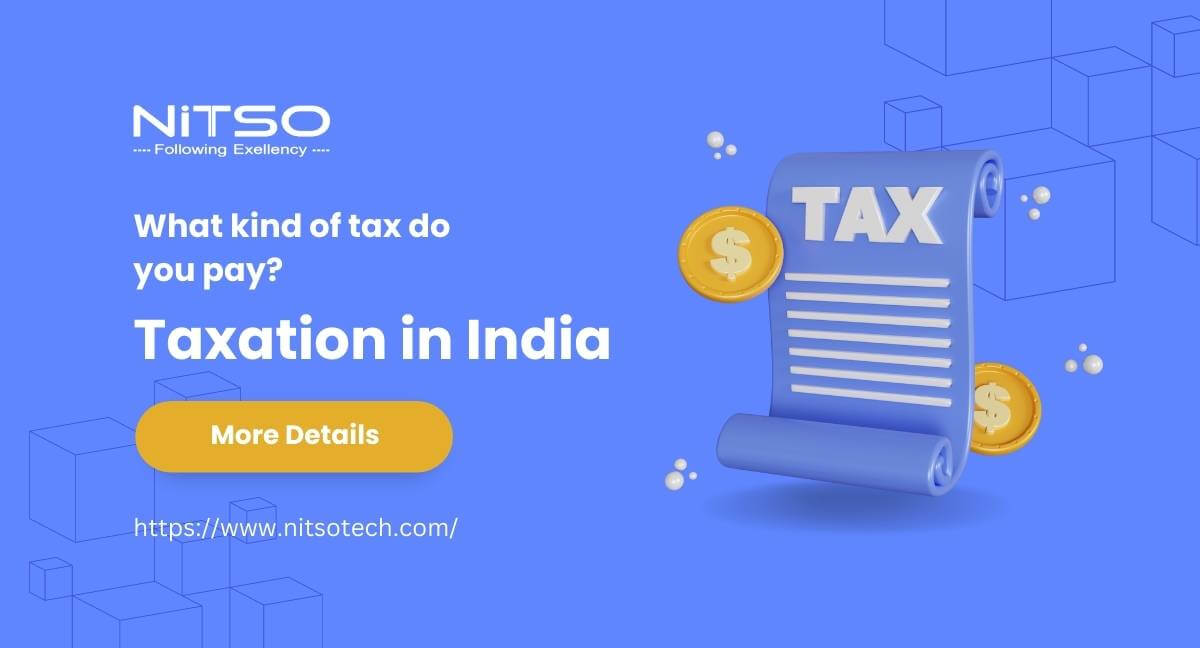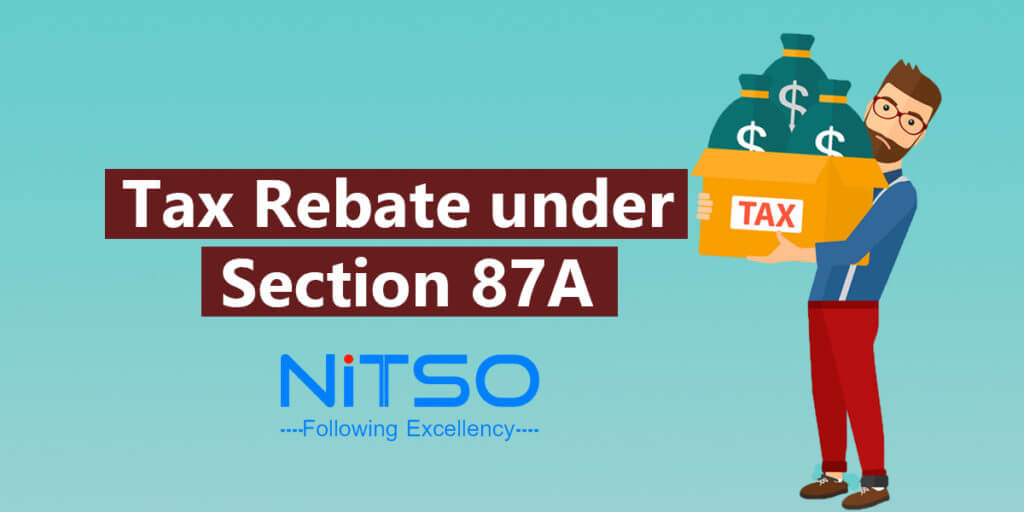What is Tax?
Tax is a financial charge imposed by a government on individuals, businesses, and other entities, typically as a percentage of income or of the value of goods and services.
Taxation in India refers to the system of levying and collecting taxes in the country. The Indian tax system is governed by the Central Board of Direct Taxes (CBDT) and the Central Board of Indirect Taxes and Customs (CBIC).
Taxes can be direct, where the tax is paid directly by the individual or business to the government, or indirect, where the tax is included in the price of a good or service and paid by the consumer when the good or service is purchased.
The main types of taxes in India include income tax, sales tax/value-added tax (VAT), and goods and services tax (GST). These taxes are imposed on individuals and businesses, and the revenue collected is used to fund government programs and services.
Table of Contents
Who Should Pay Tax in India?
In India, various categories of individuals and entities are liable to pay taxes. The liability to pay taxes depends on the type of tax and the nature of the income or transaction.
- Individuals: Indian citizens and residents are liable to pay income tax on their global income, if it exceeds the basic exemption limit for the financial year. Non-residents are liable to pay taxes only on their income earned in India or from Indian sources.
- Hindu Undivided Families: Hindu Undivided Families (HUFs) are also liable to pay taxes on their income, just like individuals.
- Companies: Companies are liable to pay corporate income tax on their profits earned during the financial year.
- Partnership Firms: Partnership firms are also liable to pay taxes on their income.
- Trusts: Trusts are liable to pay taxes on the income they earn, just like other entities.
- Other entities: AOPs, BOIs, LLP, and Local Authority are also taxable entity and liable to pay taxes on their income.
In addition, there are other taxes such as customs duty, excise duty, and service tax, which are applicable to specific transactions or activities.

Types of Taxes in India
There are two main types of taxes in India: direct taxes and indirect taxes.
Direct Tax
Direct taxes are taxes that are imposed directly on individuals and corporate entities, and the responsibility to pay these taxes cannot be passed on to others. The most commonly known direct tax for individuals is the income tax, which is levied on the income earned by an individual during the financial year (1st April to 31st March). According to the Income Tax Act, 1961, it is mandatory for individuals whose annual income exceeds the minimum exemption limit to pay income taxes. The Act also provides tax benefits for individuals under various sections.
Indirect Tax
Indirect Taxes: Indirect taxes are taxes that are imposed on goods and services, and the liability to pay these taxes can be transferred to another person.
The most common examples of indirect taxes in India are Sales tax/Value-added tax (VAT) and Goods and Services Tax (GST). Sales tax/VAT is a tax imposed on the sale of goods and services, and the tax rate varies depending on the state and the type of good or service. GST is a consumption-based tax, it is levied on the value-added to goods and services at every stage of production and distribution. GST replaced a number of indirect taxes in India, such as VAT, service tax, and excise duty. GST is levied at various rates, 0%, 5%, 12%, 18% and 28%.
Different types of direct taxes
In India, direct taxes make up a significant portion of the government’s revenue, accounting for approximately 50%. However, it’s important to note that income tax is not the only direct tax that exists. The following are some of the types of direct taxes applicable in India:
Income Tax
Income tax is a tax imposed by the government on the income earned by individuals, Hindu Undivided Families (HUFs), firms, companies, and other entities during a financial year (April 1st to March 31st). The tax is imposed on the basis of the income earned and the tax rate varies depending on the income bracket of the taxpayer.
In India, income tax is governed by the Income Tax Act, 1961 and administered by the Income Tax Department. Taxpayers are required to file an income tax return, declaring their income and taxes paid, to the department.
The income tax rate for individuals and HUFs in India is progressive, which means that the tax rate increases as the income level increases. There are different tax slab rates for different ranges of income, and tax exemptions and deductions are available for certain types of income, such as investments in tax-saving instruments, and for certain expenses, such as medical expenses, donations to charitable organizations, and so on.
It is mandatory for individuals whose annual income exceeds the minimum exemption limit to pay income taxes. The Act also provides tax benefits for individuals under various sections.
Capital Gains
Capital gains tax is a tax imposed on the profit or gain realized from the sale of a capital asset. Capital assets include property, shares, mutual funds, gold, and other investments.
For example, if an individual purchases a property for 20 Lakhs and sells it after a year for 25 Lakhs, the individual will have a capital gain of 5 Lakhs. This gain is subject to capital gains tax. The tax rate and the period for which the asset is held (short-term or long-term) determine the amount of tax that needs to be paid.
Short-term capital gains: If an asset is held for less than 36 months, it is considered as short-term capital asset. Short-term capital gains are taxed at the same rate as the individual’s income tax slab.
Long-term capital gains: If an asset is held for more than 36 months, it is considered as long-term capital asset. Long-term capital gains are taxed at a lower rate for most of the assets except equity shares and equity-oriented funds.
However, there are also certain exemptions and deductions available under the income tax act, which can be claimed to reduce the tax liability on capital gains.
Securities Transaction Tax
Securities Transaction Tax (STT) is a tax imposed by the government of India on transactions made in the securities market. It is a tax on the value of securities transactions, and it is levied at the time of the transaction. STT was introduced in India in 2004 as a way to increase revenue and curb speculative activity in the securities market.
STT is applicable on the following types of transactions in the securities market:
- Purchase or sale of equity shares listed on a stock exchange
- Purchase or sale of units of equity-oriented funds
- Sale of options
- Sale of futures
- Sale of options on futures
It’s important to note that STT is not applicable on all transactions in the securities market. Transactions such as the purchase or sale of debt securities, mutual fund schemes, and government securities are not subject to STT.
Corporate Tax
Corporate tax, also known as corporate income tax, is a tax imposed on the profits earned by companies and other legal entities such as firms, partnership firms, and trust.
The tax is calculated on the company’s net income, which is the total income earned by the company during a financial year (April 1st to March 31st) minus allowable expenses such as cost of goods sold, employee salaries, and other business expenses. Companies are required to file their tax returns and pay the taxes owed to the government by the due date, usually 30th September of the assessment year.
The government uses the revenue collected from corporate income tax to fund public welfare programs and infrastructure development. The tax also helps to create a level playing field for businesses by ensuring that all companies pay their fair share of taxes and do not gain an unfair advantage over their competitors through tax evasion or avoidance.
It’s worth mentioning that some countries use a different approach where the corporate income tax is levied on the basis of the company’s turnover, not on its profits.
Wealth Tax
Wealth tax is a tax imposed on the net wealth of an individual or Hindu Undivided Family (HUF) above a certain threshold, as on a specified date. It is a direct tax, which means that the liability to pay the tax cannot be transferred to another person. Wealth tax was abolished in India in the year 2015, so currently it is not in effect.
The Wealth Tax Act, 1957, defined net wealth as the aggregate value of all assets (other than a few specified exemptions) owned by an individual or HUF as on a specified date, minus the aggregate value of all liabilities in respect of those assets. The assets that were subject to wealth tax included immovable property, cash, investments, and jewellery.
The Wealth Tax Act provided for the following exemptions:
- Residential house property
- Urban land
- Agricultural land
- Gold, silver and other precious metals and stones
- Jewellery, utensils, and ornaments
- Personal effects, paintings, sculptures and other works of art
- Bullion, gold and silver ornaments, jewellery and utensils.
The wealth tax rate was 1% on net wealth above a threshold limit of Rs. 30 lakh.
The wealth tax was abolished as it was found to be administratively burdensome and the revenue generated by it was minimal as compared to the cost of collection.
Different Types of Indirect Taxes
Indirect taxes are taxes that are imposed on goods and services, and the liability to pay these taxes can be transferred to another person. The most common types of indirect taxes in India are:
Goods and Services Tax (GST)
Goods and Services Tax (GST) is a consumption-based tax that is levied on the value-added to goods and services at every stage of production and distribution. The GST system in India was introduced in 2017 to replace a number of indirect taxes such as VAT, service tax, and excise duty. GST is a unified tax system that subsumes multiple taxes and makes compliance easier for businesses.
GST is divided into three types: CGST (Central GST), SGST (State GST), and IGST (Integrated GST). CGST and SGST are levied by the Central and State Governments, respectively, on intrastate (within the state) transactions, while IGST is levied by the Central Government on interstate (between states) transactions. GST is levied at various rates, 0%, 5%, 12%, 18% and 28%.
Under GST, businesses are required to register with the GST Council and obtain a GSTIN (GST Identification Number). They are also required to file monthly and annual returns, and pay taxes on a regular basis. Businesses with an annual turnover below a certain threshold are not required to register for GST.
The GST system has been implemented to simplify the tax system, reduce compliance costs, and increase revenue collection for the government. It also helps in removing the cascading effect of taxes, which means that taxes are not levied on taxes and the final consumer bears only the GST charged by the last dealer in the supply chain.
Overall GST is a significant reform in India’s indirect tax system, it is expected to increase the ease of doing business and bring in more transparency in the tax system.
Service Tax
Service tax is a type of indirect tax that is imposed on services provided in India. The tax is imposed on the service provider, but it is typically passed on to the consumer in the form of a higher price for the service. Service tax is collected by the government and is used to fund various government programs and services.
The Service Tax law in India was introduced in 1994, and it was applicable only on a few services. But over the years, the scope of the tax has been expanded to cover a wide range of services. Service tax is currently levied at a rate of 15% ( 14% service tax + 0.5% Swachh Bharat Cess + 0.5% Krishi Kalyan Cess) on all taxable services, unless otherwise specified.
Examples of services that are subject to service tax include:
- Services provided by hotels and restaurants
- Services provided by architects, engineers, and other professionals
- Services provided by transport companies
- Services provided by insurance companies
- Services provided by stock brokers and mutual fund agents
- Services provided by banks and other financial institutions
- Services provided by telecommunication companies
It’s important to note that service tax is not applicable on all services. Some services are exempt from service tax, such as services provided by educational institutions and hospitals, among others. Additionally, some services are subject to a lower rate of service tax or are fully exempt from service tax.
Service Tax is subsumed under GST from July 2017 and it’s called Central GST (CGST) and State GST (SGST).
Sales Tax
Sales tax is a type of indirect tax that is imposed on the sale of goods and services. The tax is generally imposed by the state government, and the tax rate can vary depending on the type of good or service and the state in which it is sold. The sales tax is generally collected by the seller of the goods or services, who is responsible for remitting the tax to the government.
In India, the sales tax was replaced by the Value-Added Tax (VAT) system in 2005. VAT is similar to sales tax, but it is based on the value added to the goods or services at each stage of production or distribution. This means that the tax is imposed on the difference between the price of the goods or services at the time of purchase and the cost of the inputs used to produce the goods or services.
VAT is collected by the state government, and the tax rate can vary depending on the type of good or service and the state in which it is sold. Businesses that are registered for VAT are required to charge VAT on their sales and to remit the tax to the government. They can also claim credit for the VAT paid on their inputs, which helps to avoid cascading of taxes.
In 2017, VAT and sales tax were subsumed into the introduced Goods and Services Tax (GST). GST is a comprehensive, destination-based tax on goods and services, it eliminates the cascading of taxes and makes the tax system more efficient.
Excise Duty
Excise duty is a type of indirect tax imposed by the government on the manufacture or production of certain goods within the country. It is a tax on the production or manufacture of goods, rather than on their sale. Excise duty is typically imposed on goods that are considered luxury items or non-essential items, such as cigarettes, alcohol, and gasoline.
Excise duty is generally imposed on the manufacturer or producer of the goods, who is liable to pay the tax. The manufacturer or producer can then pass on the cost of the tax to the consumer by increasing the price of the goods. The excise duty rate varies depending on the type of good and the government’s policy.
Excise duty is governed by the Central Excise Act, 1944, and the rules made there under. The Central Board of Indirect Taxes and Customs (CBIC) is responsible for the administration of excise duty in India.
In 2017, excise duty was subsumed into Goods and Services Tax (GST). Now excise duty is being levied only on a few items such as petrol, diesel, alcohol, and tobacco products.
Customs Duty
Customs duty is a tax imposed by the government on imported goods and some exported goods, as they cross the country’s border. The primary purpose of customs duty is to protect domestic industries from foreign competition by making imported goods more expensive. It also serves as a source of revenue for the government.
The rate of customs duty varies depending on the type of goods and the country of origin. The duty rate can be ad valorem, which means it is a percentage of the value of the goods, or it can be specific, which means it is a fixed amount per unit of measurement (such as per metric ton).
Customs duty is paid by the importer of the goods and is calculated based on the value of the goods, the weight, or the volume. The customs duty can be levied on the cost, insurance, and freight (CIF) value or the landed cost of the goods, which is the cost of the goods plus other charges incurred during transport and delivery.
In India, Customs duty is governed by the Customs Act, 1962, and the rules and regulations made under it. The Central Board of Indirect Taxes and Customs (CBIC) is responsible for the administration of Customs Act, 1962, and the collection of customs duty.
In addition to Customs duty, other taxes such as Countervailing Duty (CVD) and Special Additional Duty (SAD) are also imposed on imported goods in India.
Disadvantages of Indirect Taxes before GST
Before the introduction of the Goods and Services Tax (GST) in India, the country had a complex system of indirect taxes that had several disadvantages. Some of the main disadvantages are:
- Cascading of Taxes: The cascading effect of taxes, also known as tax-on-tax, was a major disadvantage of the previous indirect tax system. This means that taxes were imposed on goods and services at every stage of production and distribution, leading to an increase in the final price of goods and services.
- Complex Compliance: The previous indirect tax system was complex and had multiple taxes at the central and state level, such as excise duty, sales tax, and value-added tax (VAT). This made compliance with tax laws and regulations a difficult and time-consuming process for businesses.
- Inefficient Tax Administration: The previous indirect tax system had multiple tax authorities at the central and state level, leading to inefficiencies in tax administration and a lack of coordination among different agencies. This made it difficult for businesses to comply with tax laws and regulations and led to disputes and delays in tax refunds.
- Limited Tax Base: The previous indirect tax system had a narrow tax base and high tax rates, which discouraged compliance and led to a large informal economy.
- Lack of Transparency: The previous system of taxes was not transparent, as it had multiple taxes with different rates and exemptions which made it difficult for businesses and consumers to understand the total tax burden.
The introduction of GST, which replaced a number of indirect taxes and created a single, unified tax system, aimed to address these disadvantages and improve the efficiency of the Indian tax system.

Benefits of Taxes
Here are some of the benefits of taxes:
- Funding government programs and services: Taxes are the primary source of revenue for governments and are used to fund public goods and services such as infrastructure, education, healthcare, and social welfare programs.
- Redistributing wealth: Taxes can be used to redistribute wealth and reduce income inequality by imposing higher taxes on the wealthy and using the revenue to provide social services and benefits for lower-income individuals and families.
- Encouraging economic growth: Taxes can be used to encourage economic growth by providing incentives for businesses to invest in new equipment, expand operations, and create jobs.
- Promoting social goals: Taxes can be used to promote social goals such as environmental protection and conservation, public health and safety, and cultural heritage preservation.
- Regulating trade and commerce: Taxes can be used to regulate trade and commerce by imposing tariffs on imported goods or taxes on specific products and services to protect domestic industries and discourage the consumption of certain goods and services.
- Reducing public debt: taxes are also used to repay public debt and help the government to balance its budget over time.
- Reducing inflation: taxes can help reduce inflation by decreasing aggregate demand in the economy.
Advantages of Paying Taxes
Paying taxes has several advantages for both individuals and society as a whole. Some of the main advantages of paying taxes are:
- Funding for Government Services: Taxes provide the government with the revenue it needs to fund various public services such as education, healthcare, infrastructure development, and social welfare programs.
- Loan approvals: When applying for loans, such as home loans or vehicle loans, major banks may request copies of your income tax returns from the last 2 to 3 years. Having a record of your income tax returns can help increase the chances of getting a higher loan amount or getting your loan application reconsidered if it was initially rejected. This is because banks use income tax returns to assess an applicant’s ability to repay the loan by providing a clear picture of the applicant’s income and taxes paid in the previous years.
- Visa application: Similarly, when applying for a visa, many foreign consulates require applicants to furnish their income tax returns from the previous years. Some consulates require only the most recent return, while others may require up to 2-3 years’ worth of returns. This is mandatory for countries such as the UK, US, Europe, and Canada but may not be as strictly enforced in other countries such as those in Southeast Asia and the Middle East. The reason for this is that income tax returns serve as proof that the applicant is not trying to leave the country to evade taxes. Even when traveling abroad for leisure or business, it is recommended to carry copies of your income tax returns as it can be useful in emergency situations when seeking the help of a consulate.
- Promoting Economic Growth: Taxes can be used to promote economic growth by providing incentives for businesses to invest and create jobs.
- Redistribution of Wealth: Taxes can be used to redistribute wealth and reduce income inequality by providing support for low-income individuals and families.
- Maintaining Public Infrastructure: Taxes are used to maintain public infrastructure such as roads, bridges, public transportation and other public utilities.
- National Defense: Taxes are also used to fund the country’s defense and security, including the military and intelligence agencies.
- Financing for Development: Taxes can be used to finance development projects, such as building schools and hospitals, and improving infrastructure
- Encouraging Saving and Investment: Taxes can be used as an incentive for individuals to save and invest their money, which can help promote long-term economic growth.
- Enhancing the Standard of Living: Taxes can be used to enhance the standard of living by funding public services, infrastructure and other development projects that can improve the overall quality of life in a country.
Penalty for not Paying Taxes
There are several penalties for not paying taxes in India. The specific penalty will depend on the type of tax and the circumstances of the case.
- Interest: If taxes are not paid by the due date, interest will be charged on the outstanding amount. The interest rate can be as high as 1% to 1.5% per month or part of a month, depending on the type of tax.
- Late Filing Fees: If a tax return is filed after the due date, a late filing fee may be imposed. The fee can be as high as Rs. 10,000 for individuals and Rs. 1,50,000 for companies, depending on the type of tax and the income bracket of the taxpayer.
- Prosecution: In serious cases of tax evasion, the taxpayer may be subject to prosecution and fines, and even imprisonment. The punishment can range from rigorous imprisonment up to 7 years and fine.
- Disqualification: If a person fails to get his accounts audited, he can be disqualified from being appointed as a director in any company for a period of 5 years from the end of the financial year in which the accounts ought to have been audited.
- Disallowance of expenses or deductions: If a person doesn’t maintain the books of accounts as required under the Income-tax Act, the expenses or deductions claimed by him in the computation of income will be disallowed.
- Penalty for non-filing of returns: If a person fails to furnish the return of income within the due date, a penalty of Rs. 5,000 can be levied if the return is furnished within one year of the due date. If the return is furnished after one year, the penalty leviable is Rs. 10,000.
It’s important to note that penalties for non-compliance with tax laws can be severe, so it is in the best interest of taxpayers to comply with their tax obligations and file returns on time to avoid any penalties or legal consequences.
Article related to tax:
- Tax Rebate Under Section 87A of the Income Tax Act in India
- Notice Pay- Salary in lieu of Notice
- Can the Rent Paid to family members be Eligible for HRA Exemption under the Income Tax Act?
FAQs (Frequently Asked Questions)
What is the due date for filing income tax returns in India?
The due date for filing income tax returns in India is July 31st of every year for individuals and September 30th for companies and other entities.
What is the basic exemption limit for income tax in India?
The basic exemption limit for income tax in India for the financial year 2021-2022 is Rs 2,50,000 for individuals below 60 years of age and Rs 3,00,000 for individuals above 60 years of age but below 80 years of age. For senior citizens above 80 years of age, the basic exemption limit is Rs 5,00,000.
What is the income tax slab rate for individuals in India?
The income tax slab rate for individuals in India for the financial year 2021-2022 are:
· Up to Rs 2,50,000: No tax
· Rs 2,50,001 to Rs 5,00,000: 5%
· Rs 5,00,001 to Rs 7,50,000: 10%
· Rs 7,50,001 to Rs 10,00,000: 15%
· Rs 10,00,001 to Rs 12,50,000: 20%
· Rs 12,50,001 to Rs 15,00,000: 25%
· Above Rs 15,00,000: 30%
How do I file my income tax returns in India?
Income tax returns can be filed electronically using the e-filing portal of the Income Tax Department of India. Taxpayers can also file their returns using a paper form and submit it at a designated tax office.
What is the penalty for not filing income tax returns in India?
The penalty for not filing income tax returns in India can be a late filing fee of up to Rs. 10,000 for individuals and Rs. 1,50,000 for companies. In serious cases of tax evasion, the taxpayer may be subject to prosecution and fines, and even imprisonment.
What is the GST rate in India?
The GST rate in India is levied at various rates, 0%, 5%, 12%, 18% and 28%. The specific GST rate depends on the type of goods or services being sold.
What are the compliance requirements for GST in India?
Businesses whose turnover exceeds the threshold limit, as well as businesses that opt to register under GST voluntarily, are required to comply with GST in India. This includes registering for GST, filing GST returns, and paying GST taxes.
Is there any tax credit for taxes paid under the previous indirect tax regime?
Yes, Tax credit for taxes paid under the previous indirect tax regime is available under GST regime, it’s called Transitional Input Tax Credit. It is provided to the taxpayers to adjust the credit of taxes paid under previous laws with GST liability.
What is professional tax?
Professional tax is a tax imposed by state governments in India on individuals who are engaged in certain professions, trades, or employment. The tax is levied on the income earned by individuals from these professions, and the rate and method of calculation of the tax can vary depending on the state. Some of the professions that are typically subject to professional tax include salaried employees, doctors, engineers, chartered accountants, lawyers, and others.
How to pay tax online?
Paying taxes online in India is a simple and convenient process. The Income Tax Department of India provides an e-filing portal where taxpayers can file their income tax returns and make payments electronically. To pay taxes online, taxpayers need to first register on the e-filing portal by providing personal and contact information, creating a login ID and password. Once registered, taxpayers can login to the portal, and file their returns by providing information on their income, deductions, and tax liability.
Once the returns are filed, taxpayers can make payments of taxes due using various online methods such as net banking, credit/debit cards, or through digital wallets such as Paytm, BHIM, PhonePe, etc. Additionally, taxpayers can also use the National Electronic Funds Transfer (NEFT) or Real-time Gross Settlement (RTGS) method to pay taxes online. It is recommended to keep a record of the transaction number or receipt of the online payment as proof of payment.
How are excess taxes refunded?
To claim refunds on excess taxes paid, you will first have to file your income tax returns. They will be credited to your bank account through the Electronic Clearing System (ECS) facility.








0 Comments